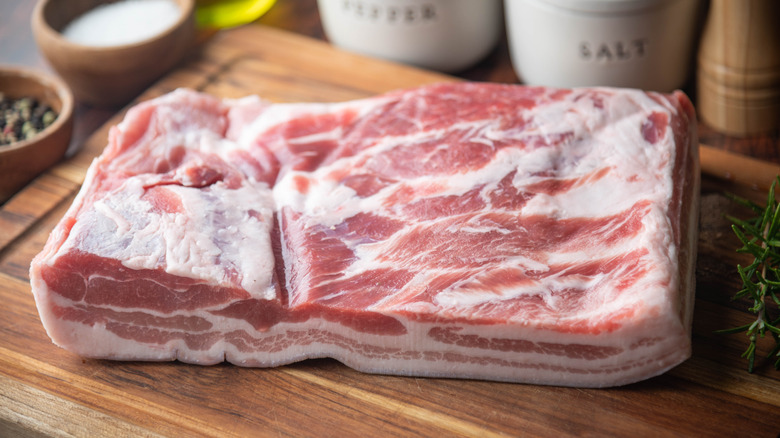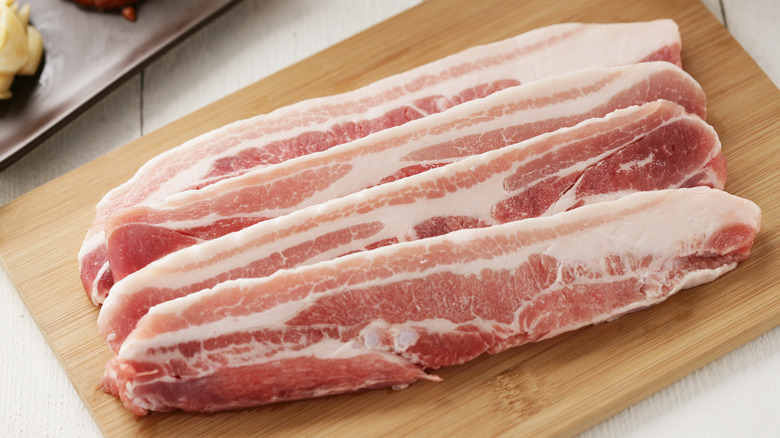Why You Shouldn't Cut The Fat Cap Off Pork Belly
True pork belly fans know there are no substitutes for the real thing. The fatty, boneless cut steals the show in bao and lo mein. Shoyu-glazed pork belly is the unofficial star of the Tonkotsu ramen at Ivan Ramen in Manhattan's Lower East Side. But pork belly isn't limited to just Chinese fare. The rich meat amps up tacos and tamales, too — and there's a reason for its global gastronomic fanbase.
Pork belly comes from the underside of a pig, like bacon and pancetta. But, make no mistake, it's leagues different. According to the National Pork Board, pork belly is "the boneless cut that remains after the loin and spareribs are removed." It's essentially a slab of meat rippled with generous streaks of white fat.
Though it's certainly not a lean cut of pork, it still boasts some impressive health benefits. Per Healthline, just four ounces of pork belly packs 11 grams of protein and 39.5% of the daily value for Vitamin B12. And as meat goes, it runs on the affordable side.
But, even if you consider yourself a steadfast fan, there's one critical mistake you might be making with pork belly — cutting off the fat cap. Here's why you shouldn't do it.
That fat is where it's at
In a cut of pork belly, the individual ripples of fat and meat are surrounded by another outer layer of fat. This outer layer, called the cap, explains Blue Apron, should be kept intact. If you've been cutting it off, you've been missing out. Slow heat makes for moist meat when cooking pork belly, and it's the golden rule for a melt-in-your-mouth finished product.
Since you'll be cooking your pork belly slow and low, most of that fat cap renders off during braising. Per Bon Appétit, a long, slow cook also breaks down tough collagen fibers in the pork belly, creating a tender bite. As the fat falls away from the meat and into the pan, the pork belly continues to cook in its own melted fat, a natural moisturizing agent that adds major flavor. In fact, this fatty cap is where most of the pork belly's flavor comes from. The meat itself has a mild taste, says The Spruce Eats, but the natural fat that melts off and gets absorbed during cooking is responsible for pork belly's trademark richness.
To make sure your fat cap is large enough to do the trick, Great British Chefs recommends looking for cuts of pork belly with distinctly white, silky, creamy-looking ribbons of fat. A 50:50 fat-to-meat ratio is ideal, says the outlet.

